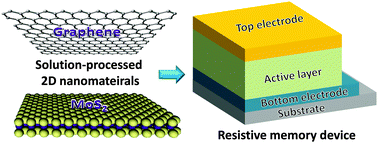Non-volatile resistive memory devices based on solution-processed ultrathin two-dimensional nanomaterials
Abstract
Ultrathin two-dimensional (2D) nanomaterials, such as graphene and MoS2, hold great promise for electronics and optoelectronics due to their distinctive physical and electronic properties. Recent progress in high-yield, massive production of ultrathin 2D nanomaterials via various solution-based methods allows them to be easily integrated into electronic devices via solution processing techniques. Non-volatile resistive memory devices based on ultrathin 2D nanomaterials have been emerging as promising alternatives for the next-generation data storage devices due to their high flexibility, three-dimensional-stacking capability, simple structure, transparency, easy fabrication and low cost. In this tutorial review, we will summarize the recent progress in the utilization of solution-processed ultrathin 2D nanomaterials for fabrication of non-volatile resistive memory devices. Moreover, we demonstrate how to achieve excellent device performance by engineering the active layers, electrodes and/or device structure of resistive memory devices. On the basis of current status, the discussion is concluded with some personal insights into the challenges and opportunities in future research directions.

- This article is part of the themed collection: 2D Transition Metal Dichalcogenide (TMD) Nanosheets

 Please wait while we load your content...
Please wait while we load your content...